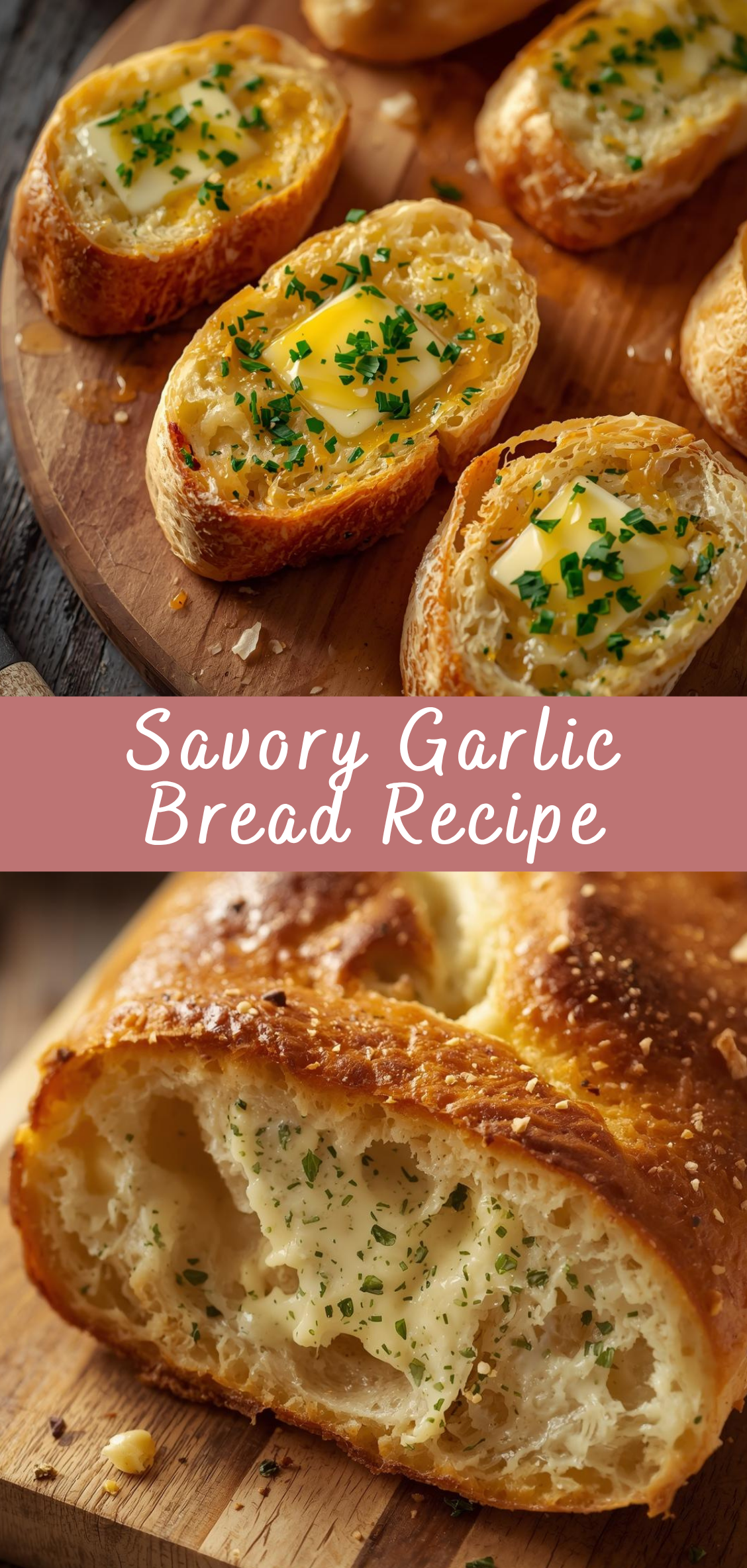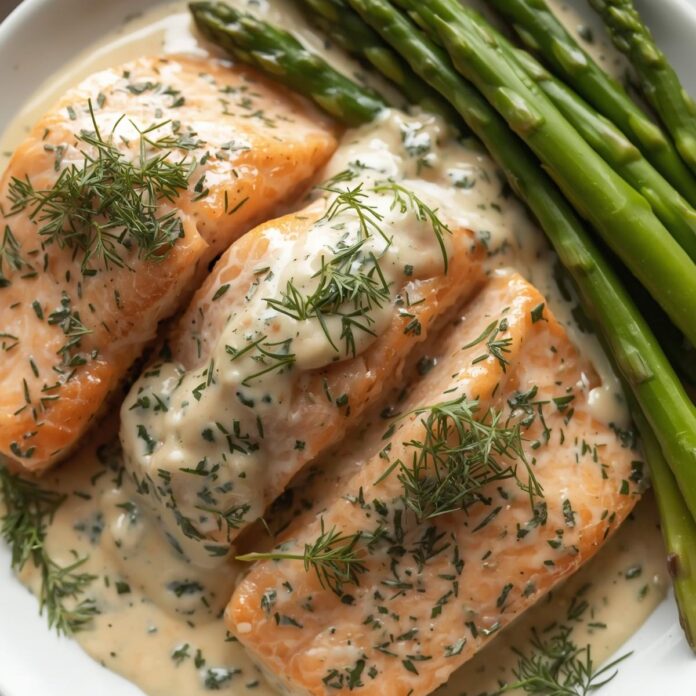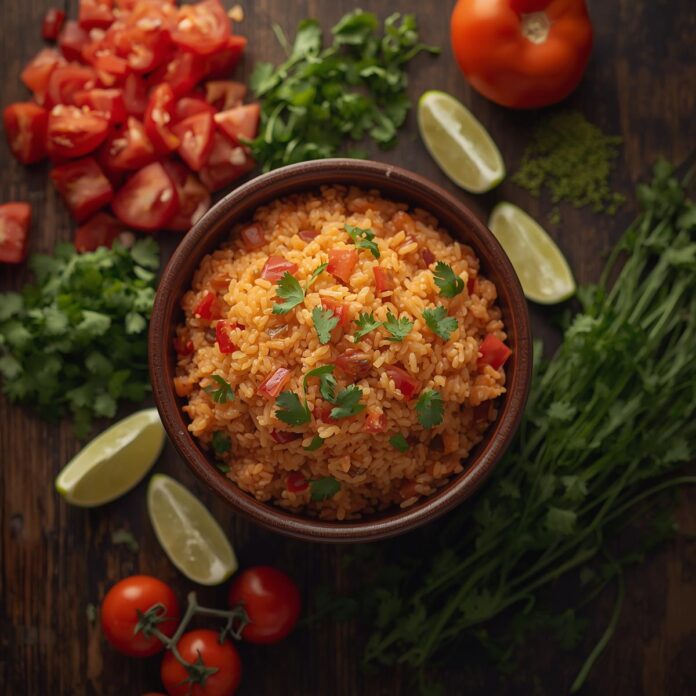There are few culinary experiences as universally loved, as irresistibly comforting, and as deeply nostalgic as the first bite of warm, buttery garlic bread. It is a dish that transcends boundaries, appearing on tables from small family kitchens to bustling Italian trattorias, from elegant dinner parties to casual backyard barbecues. Its aroma alone—the fusion of roasted garlic, golden butter, and freshly baked bread—has the power to draw people together. Garlic bread is not merely a side dish; it is a sensory event, a celebration of flavor and texture that bridges simplicity and indulgence.

At its core, savory garlic bread is an exercise in balance. It embodies the harmony between the soft and the crisp, the rich and the subtle. The outer crust, toasted to golden perfection, provides that satisfying crunch that gives way to a tender interior infused with melted butter and aromatic herbs. The garlic, roasted or sautéed to just the right point of sweetness, adds a depth that awakens the palate without overpowering it. When done properly, every bite offers contrast: the crunch of the crust, the softness of the crumb, the warmth of the butter, and the lingering perfume of garlic that feels both rustic and refined.
While it’s often thought of as a simple accompaniment—something to serve alongside pasta or soup—garlic bread holds a significance that goes beyond its supporting role. It represents the generosity of home cooking. It is one of the first things many people learn to make, yet it is also a dish that even seasoned chefs continue to refine. Its ingredients are humble—bread, butter, garlic, herbs—but in the hands of a thoughtful cook, those ingredients transform into something extraordinary. The act of making garlic bread is almost meditative: slicing the loaf with deliberate care, mixing the butter until smooth and fragrant, brushing each surface with the garlicky spread, and waiting as the oven coaxes everything to a perfect golden finish.
Historically, the origins of garlic bread can be traced back to the ancient Mediterranean world. Long before it became a staple of Italian-American cuisine, there were versions of bread rubbed with olive oil and garlic in regions like Rome, Greece, and Provence. In Italy, bruschetta—toasted bread rubbed with garlic and drizzled with olive oil—laid the foundation for what would later evolve into the buttery, herb-rich garlic bread popular today. When Italian immigrants brought their culinary traditions to North America, they adapted them to the ingredients at hand, replacing olive oil with butter, and soon the garlic bread we know today became a defining part of Western comfort food culture.
Despite its humble beginnings, garlic bread has proven endlessly adaptable. It can be made with crusty baguettes for a traditional European texture, with soft sandwich loaves for a tender American-style version, or even with sourdough for a modern artisanal twist. The butter can be infused with everything from Parmesan and parsley to roasted garlic and chili flakes. The bread can be toasted in the oven, grilled over an open flame, or pan-fried in a skillet for that deep, caramelized finish. Each variation tells a different story, shaped by personal taste, cultural background, and the available ingredients.
What makes savory garlic bread particularly captivating is how it appeals to all the senses. You hear the crackle as the knife slices through the crust. You see the glistening butter melt into the crumb. You smell the irresistible aroma of garlic wafting through the kitchen, mingling with herbs like rosemary, oregano, or parsley. You feel the warmth radiating from the freshly baked loaf as you tear it apart. And of course, you taste that perfect combination of salt, fat, and aromatic sweetness—the essence of comfort itself.
Garlic bread also carries an emotional dimension. It is the dish that welcomes guests, that fills a kitchen with warmth, that turns an ordinary meal into a celebration. It’s a symbol of hospitality and generosity—something you share with others. For many, it recalls family gatherings, dinners with friends, or moments of quiet indulgence late at night. It’s impossible to separate the taste of garlic bread from the memories it evokes.
Yet for all its familiarity, true mastery of garlic bread lies in the details. The right proportion of garlic to butter determines whether it’s delicately aromatic or overwhelming. The texture of the bread—whether crisp baguette, chewy ciabatta, or fluffy Italian loaf—affects how the flavors are absorbed. Even the method of baking can make the difference between a loaf that’s merely good and one that’s exceptional. There’s an art to roasting garlic until it becomes soft and caramelized, blending butter to a creamy consistency, and spreading it evenly enough to coat every corner without making the bread soggy.
This guide aims to capture that art in full. Over the next sections, we will explore every stage of crafting the perfect Savory Garlic Bread—from selecting the right bread and preparing the butter blend, to mastering the bake and achieving that elusive golden crust. You’ll learn how to balance flavors, how to adjust the recipe for your preferences, and how to elevate a simple loaf into a showstopping centerpiece worthy of any table.
We’ll begin by examining the key ingredients: the role of fresh garlic versus roasted, the importance of butter temperature, and the subtle influence of herbs and seasonings. Then we’ll move through the preparation steps in meticulous detail, including the chemistry behind browning, the ideal baking temperature, and the timing that ensures your bread remains crisp outside but tender inside. Along the way, you’ll find insights into creative variations—like cheesy garlic bread, spicy herb versions, and even dairy-free adaptations—that allow you to personalize the classic recipe.
Ultimately, this isn’t just about making garlic bread—it’s about understanding why this dish continues to enchant. It’s about transforming simple ingredients into something transcendent. It’s about the joy of creation and the satisfaction that comes from serving something you’ve made by hand, something that delights others.
So, preheat your oven, take out your butter, and let the fragrance of garlic begin to fill the air. The journey to mastering Savory Garlic Bread begins here—with patience, precision, and an appreciation for the small details that turn the ordinary into the extraordinary.
Detailed Instructions: Step-by-Step Guide to Perfect Savory Garlic Bread
1. Selecting the Right Bread
The foundation of perfect garlic bread is, of course, the bread itself. It determines not only the texture but how flavors distribute, how butter seeps in, and how the crust crisps under heat.
a. The classic choice – French baguette:
A traditional baguette offers the ideal ratio of crisp crust to airy crumb. Its narrow shape and firm texture allow for even toasting, and it absorbs butter without collapsing. The slight tang of the dough complements the richness of the garlic spread beautifully.
b. Italian loaf or ciabatta:
If you prefer a heartier, chewier bite, opt for ciabatta or a rustic Italian loaf. Their open crumb structure allows the butter and garlic to penetrate deeply, creating pockets of flavor that burst with every mouthful.
c. Soft loaves for comfort-style garlic bread:
For a more American-style version—soft, buttery, and deeply indulgent—use sandwich bread, brioche, or even sub rolls. These absorb the butter mixture generously and produce a tender interior.
Bread selection tips:
-
Avoid very fresh bread straight from the oven—it can be too soft and will soak up too much butter. Slightly day-old bread, firm but not dry, works best.
-
Slice evenly. Consistency in thickness (about ¾ inch per slice) ensures even toasting.
-
If using a long loaf, slice lengthwise through the middle to create two halves that open like a book. This makes spreading easier and presentation beautiful.
2. Preparing the Garlic
The heart of this recipe lies in mastering the flavor of the garlic. Too raw, and it’s harsh and biting; too cooked, and it loses its identity. The goal is balance—garlic that’s aromatic, mellow, and sweet but still unmistakably bold.
a. Choosing your garlic:
Always start with fresh, firm garlic bulbs. Look for cloves that are plump, tightly packed, and free from green sprouts (which can add bitterness).
b. Three methods for preparing garlic:
1. Fresh minced garlic (for bold flavor):
Peel the cloves and mince them finely with a knife or press. Mixing this raw garlic directly into butter yields a sharper, more pungent taste—ideal for those who love the full intensity of garlic.
2. Roasted garlic (for sweet, mellow flavor):
Roasted garlic transforms sharpness into buttery depth.
To roast:
-
Preheat your oven to 400°F (200°C).
-
Slice about ¼ inch off the top of a garlic bulb to expose the cloves.
-
Place it on a small piece of foil, drizzle with olive oil, and wrap tightly.
-
Roast for 35–40 minutes, until the cloves are soft and golden.
-
Once cool, squeeze the softened cloves from their skins—they will spread like paste.
Roasted garlic can replace part or all of the raw garlic in your butter blend. For the richest, most nuanced flavor, use a combination of both.
3. Sautéed garlic (for a balanced middle ground):
If you want something between raw and roasted, mince your garlic and lightly sauté it in a tablespoon of butter over low heat for 2–3 minutes, just until fragrant. Cool before mixing into the spread.
3. Creating the Garlic Butter Spread
The butter mixture is the flavor vehicle that transforms plain bread into garlic bread heaven. The goal is a smooth, spreadable consistency infused with garlic, herbs, and a touch of salt.
You’ll need:
-
½ cup (1 stick) unsalted butter, softened to room temperature
-
4–6 cloves garlic (roasted, minced, or mixed)
-
2 tablespoons finely chopped fresh parsley
-
½ teaspoon salt (adjust to taste)
-
¼ teaspoon freshly ground black pepper
-
Optional: 2 tablespoons grated Parmesan cheese for richness
-
Optional: pinch of crushed red pepper flakes for mild heat
a. Softening the butter:
Take your butter out of the refrigerator at least 30 minutes before use. Room-temperature butter blends more evenly with the other ingredients. Do not melt the butter—melted butter can separate and make your bread greasy rather than creamy.
b. Mixing process:
-
In a medium bowl, combine the softened butter, minced or roasted garlic, salt, pepper, and parsley.
-
Using a fork or small whisk, mash and mix until fully incorporated. The texture should be fluffy, not oily.
-
Taste the mixture. Adjust seasoning—add more garlic for intensity, more salt for contrast, or a squeeze of lemon juice if you’d like a subtle brightness.
-
If adding cheese, stir it in last. Parmesan adds umami depth and helps form a lightly crisped top layer when baked.
c. Optional flavor variations:
-
Add a dash of oregano or thyme for an Italian twist.
-
Mix in a spoonful of cream cheese for a creamy texture.
-
Use olive oil in place of half the butter for a lighter Mediterranean flavor.
4. Preparing and Spreading the Bread
a. Prepping the loaf:
-
If using a baguette or Italian loaf, slice it lengthwise through the center so it opens like a book.
-
For individual slices, cut into uniform pieces about ¾ inch thick.
b. Applying the butter mixture:
-
Using a spatula or butter knife, spread a generous but even layer of garlic butter over the cut sides or slices.
-
Ensure full coverage—edges should not be neglected. Uneven buttering leads to uneven browning.
-
For an extra-crisp texture, drizzle lightly with olive oil after spreading.
-
If desired, sprinkle a pinch of Parmesan or grated mozzarella on top for a cheesy crust.
Pro tip:
If you’re working ahead, you can prepare and butter the bread up to 8 hours in advance. Cover and refrigerate; bring to room temperature before baking.
5. Baking the Garlic Bread
Perfect baking is where texture and flavor come together. The goal: a golden crust, melted butter, and an interior that’s warm and fragrant.
a. Oven method (traditional):
-
Preheat oven to 375°F (190°C) for soft, buttery bread or 425°F (220°C) for crispier results.
-
Line a baking sheet with parchment paper or foil for easy cleanup.
-
Arrange the buttered bread halves or slices on the sheet, buttered side up.
-
Bake for 10–12 minutes, until the butter has melted and the edges start to turn golden.
-
For a deeper golden crust, switch the oven to broil for 1–2 minutes at the end—but watch closely; garlic can burn quickly.
b. Grill method (for smoky depth):
-
Preheat your grill to medium-high.
-
Place buttered bread cut-side down for 1–2 minutes to lightly char, then flip and grill butter-side up for another 3–4 minutes until golden and bubbling.
-
This method infuses a subtle smokiness, perfect for outdoor meals.
c. Skillet or pan method (quick stovetop version):
-
Heat a non-stick skillet over medium-low.
-
Place buttered bread slices butter-side down, press lightly, and toast for 2–3 minutes per side.
-
This produces a deeply caramelized surface and is ideal for small batches.
6. Finishing Touches
Once baked to perfection, how you finish your garlic bread defines its character.
a. Adding freshness:
Immediately after removing from the oven, sprinkle with a bit of fresh parsley or basil for color and aroma.
b. Optional drizzle:
A touch of extra-virgin olive oil or melted butter brushed over the top adds sheen and enhances flavor.
c. Cutting and serving:
-
If using loaf halves, slice crosswise into serving pieces while warm.
-
Serve immediately—the contrast between the crisp crust and soft interior is best enjoyed fresh.
7. Tips for Perfect Texture and Flavor
-
Balance your garlic intensity. If using raw garlic, less is more; roasted garlic allows for more generous use.
-
Mind your butter temperature. Soft, spreadable butter coats evenly—cold butter tears bread, melted butter pools.
-
Use real butter. Margarine or spreads contain water and can make the bread soggy.
-
Don’t walk away during broiling. Garlic burns in seconds, turning bitter.
-
Serve hot. Garlic bread loses its crispness as it cools. If holding for guests, keep it warm in a 200°F (93°C) oven for up to 20 minutes.
8. Presentation Ideas
How you serve garlic bread can elevate its presence at the table:
-
Rustic presentation: Serve in a basket lined with a clean cloth napkin to keep it warm and homey.
-
Elegant plating: Slice diagonally, fan the pieces slightly, and garnish the platter with sprigs of herbs and a small bowl of dipping sauce.
-
Creative pairing: Try serving with compound butters—herb butter, truffle butter, or chili-lime butter—for an elevated twist.
Savory Garlic Bread Recipe
There are few culinary experiences as universally loved, as irresistibly comforting, and as deeply nostalgic as the first bite of warm, buttery garlic bread. It is a dish that transcends boundaries, appearing on tables from small family kitchens to bustling Italian trattorias, from elegant dinner parties to casual backyard barbecues. Its aroma alone—the fusion of roasted garlic, golden butter, and freshly baked bread—has the power to draw people together. Garlic bread is not merely a side dish; it is a sensory event, a celebration of flavor and texture that bridges simplicity and indulgence.
Ingredients
- 1 large French baguette or Italian loaf
- ½ cup (1 stick / 113 g) unsalted butter, softened
- 3–4 cloves garlic, minced (or more to taste)
- 2 tablespoons fresh parsley, finely chopped (or 1 tablespoon dried parsley)
- ¼ teaspoon salt
- ¼ teaspoon black pepper
- ¼ teaspoon crushed red pepper flakes (optional, for a little heat)
- 2 tablespoons grated Parmesan cheese (optional, for extra flavor)
Instructions
- Preheat oven: Preheat to 375°F (190°C). Line a baking sheet with foil or parchment paper.
- Prepare garlic butter: In a small bowl, mix together butter, minced garlic, parsley, salt, pepper, and red pepper flakes (if using). Stir until smooth and well combined.
- Prepare the bread: Slice the loaf in half horizontally (like a sandwich). Spread the garlic butter evenly over both halves. Sprinkle Parmesan cheese evenly over the top if desired.
- Bake: Place bread halves on the prepared baking sheet, butter side up. Bake for 10–12 minutes, until the butter is melted and the edges start to crisp.
- Optional broil: For extra golden, crispy edges, broil for 1–2 minutes — watch carefully to avoid burning.
- Slice and serve: Remove from oven, let cool slightly, then slice into pieces. Serve warm with pasta, soup, or salad.
Notes
- Make it cheesy: Top with shredded mozzarella and broil until bubbly for a cheesy garlic bread twist.
- Add herbs: Try mixing in basil, oregano, or thyme for extra flavor.



